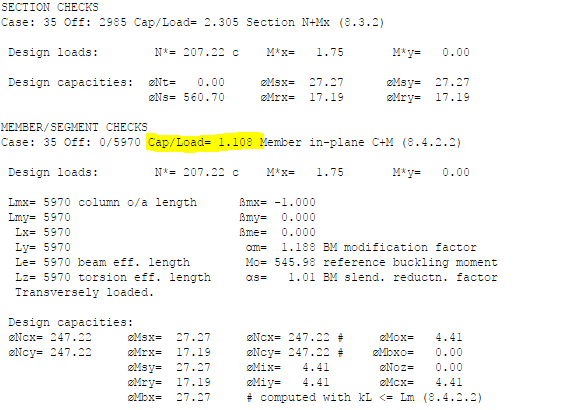Hi all,
When using a program like Microstran for steel design, it provides me with a capacity factor or utilisation ratio which is essentially capacity/load. If the capacity factor is greater than 1, it suggests the member has sufficient capacity for the applied loads. However, when the member is subject to combined actions either uniaxial or biaxial, I cannot workout how the software is calculating the capacity factor. Whether it is phi.Nc/N* or phi.Mi/M* or some ratio between the two. Would someone be able to help me out?
Thank you.
When using a program like Microstran for steel design, it provides me with a capacity factor or utilisation ratio which is essentially capacity/load. If the capacity factor is greater than 1, it suggests the member has sufficient capacity for the applied loads. However, when the member is subject to combined actions either uniaxial or biaxial, I cannot workout how the software is calculating the capacity factor. Whether it is phi.Nc/N* or phi.Mi/M* or some ratio between the two. Would someone be able to help me out?
Thank you.


![[smile] [smile] [smile]](/data/assets/smilies/smile.gif)